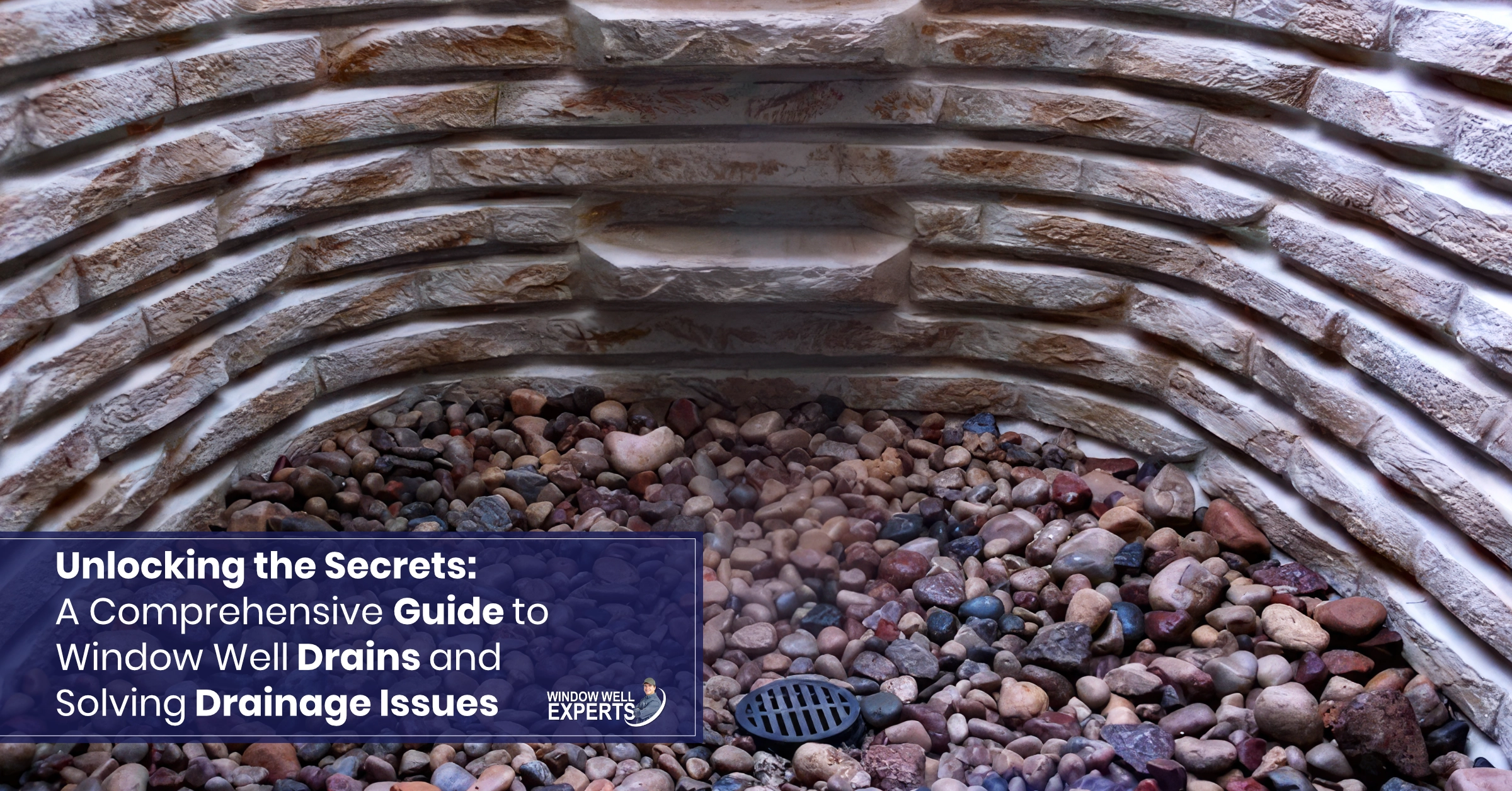Egress Well Drainage Solutions: Complete Guide to Preventing Basement Flooding

Proper drainage is the most critical aspect of egress well installation. Poor drainage leads to basement flooding, foundation damage, and thousands in repairs. This guide covers Minnesota-proven solutions to keep your basement dry.
Common Egress Well Drainage Problems
Recognize these warning signs before they cause serious damage:
Standing Water After Rain
- •Basement flooding
- •Foundation damage
- •Mold growth
- •Window seal failure
Slow Water Drainage
- •Mosquito breeding
- •Ice formation in winter
- •Gradual water seepage
Water Against Foundation
- •Foundation cracks
- •Basement moisture
- •Structural issues
Ice Buildup in Winter
- •Well damage
- •Window stress
- •Emergency egress blockage
Professional Drainage Solutions
Choose the right drainage system for your situation and budget:
Gravel Bed Foundation
Best for: Standard wells, moderate rainfall areas
12-18 inches of 3/4" crushed rock at bottom of well
Advantages
- •Cost-effective
- •Easy to install
- •Good for most situations
- •Allows water percolation
Limitations
- •Can become clogged over time
- •May be insufficient in heavy clay soil
- •Needs periodic cleaning
Drain Tile to Sump Pump
Best for: High water table areas, homes with existing sump pumps
4" perforated pipe connects well to interior sump pump system
Advantages
- •Most reliable solution
- •Active water removal
- •Protects basement
- •Works in all soil types
Limitations
- •Highest cost
- •Requires sump pump
- •More complex installation
- •Needs power
Daylight Drain System
Best for: Sloped properties, rural/suburban settings
Drain pipe slopes to daylight opening away from foundation
Advantages
- •No power needed
- •Natural drainage
- •Very reliable
- •Low maintenance
Limitations
- •Requires suitable slope
- •May need extensive piping
- •Not possible on flat lots
Well Cover System
Best for: Supplement to drainage, winter protection
Clear polycarbonate cover keeps rain and debris out
Advantages
- •Prevents debris accumulation
- •Reduces water volume
- •Allows natural light
- •Easy to install
Limitations
- •Not a complete solution alone
- •Requires periodic cleaning
- •Can trap heat in summer
Professional Drainage Installation Process
Assess Current Drainage
Identify problem areas, test drainage rate, evaluate soil conditions
Excavate and Prepare
Dig deeper if needed, remove old gravel, prepare for new drainage
Install Drain System
Place drain tile, connect to sump or daylight, test flow
Gravel Bed Installation
Add 12-18" of crushed rock, ensure proper slope toward drain
Test and Grade
Water test drainage system, adjust surrounding grade
Minnesota Winter Drainage Challenges
Freeze-Thaw Cycle Management
Minnesota's dramatic temperature swings create unique drainage challenges. Water that freezes in your egress well can expand, crack materials, and block emergency egress. Proper drainage combined with a well cover significantly reduces these risks.
Spring Snowmelt Solution
Heavy snowmelt can overwhelm drainage systems. Install drain tile connected to sump pump or daylight drain to handle spring runoff. A 12-18" gravel bed helps prevent soil erosion.
Summer Storm Management
Minnesota summers bring intense thunderstorms. Well covers reduce water volume entering the well while maintaining natural light. Ensure downspouts direct water away from wells.
Clay Soil Considerations
Many Twin Cities homes have heavy clay soil that drains poorly. In these situations, passive gravel beds alone are insufficient. You need active drainage (drain tile to sump or daylight) to prevent standing water. Never rely solely on soil absorption in clay.
Drainage System Maintenance
Even the best drainage systems need periodic maintenance to function properly:
Bi-Annual Inspection
Check drainage after heavy rain in spring and fall. Look for standing water, slow drainage, or debris accumulation.
Clean Gravel Bed Annually
Remove leaves, debris, and sediment from gravel. Replace gravel every 10-15 years as it becomes compacted.
Test Drain Tile Function
If you have drain tile, pour water in well and verify it drains within 10-15 minutes. Check sump pump operation if applicable.
Grade Inspection
Ensure ground slopes away from well. Settling can reverse grade over time, directing water toward foundation instead of away.
Warning Signs Your Drainage System is Failing
Contact a Professional Immediately If You Notice:
These symptoms indicate drainage failure that can cause serious damage:
- •Water stands for 24+ hours after rain
- •Moisture or water stains on basement walls near window
- •Musty odor in basement after rain
- •Ice formation in well during winter
- •Soil erosion around well perimeter
- •Window seal deterioration from constant moisture
Prevention Cost: $400-$1,500 for proper drainage installation
Water Damage Repair Cost: $3,000-$15,000+ for basement flooding and foundation repairs
Protect Your Basement with Professional Drainage
Don't wait for water damage. Our licensed contractors install Minnesota-proven drainage systems that keep your basement dry year-round. Free consultation and honest assessment.
Professional egress well services across Minneapolis-Saint Paul metro area
